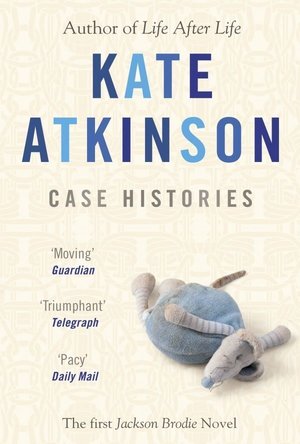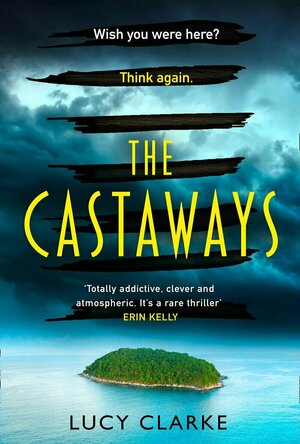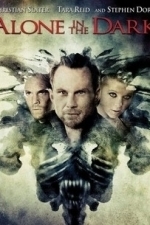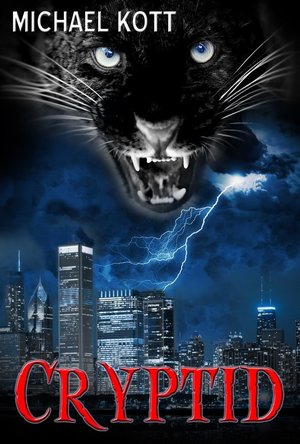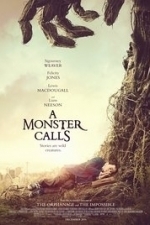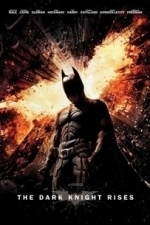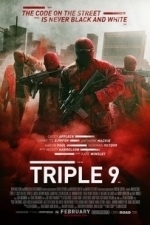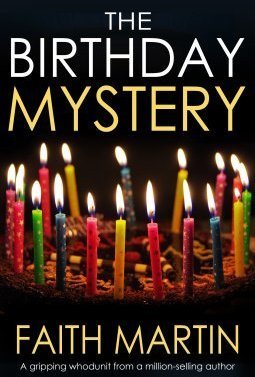Search
Search results
ClareR (5996 KP) rated Case Histories (Jackson Brodie, #1) in Books
Jul 21, 2021
I quite honestly don’t know why it took me so long to get round to reading/ listening to these books. I listened to Case Histories on my library’s audiobook app, and loved how the narrator, Susan Jameson, brought the story to life. The cases at first sight seem unrelated, but coincidences occur as the story goes on. They’re all quite quirky characters, which I enjoyed, particularly the sisters from case one. They ask Jackson to find out what happened to their little sister 40 years ago. Whilst sleeping in a tent in the back garden, three year old Olivia went missing. When find her beloved Blue Mouse in their deceased fathers desk drawer, they start to think that there is more to her disappearance - and it’s close to home.
Case two is about the death of a young woman at her fathers solicitors offices. After many years, the man who murdered her in broad daylight in the busy office, has still never been found.
The third case is a famous one. Tanya, a nurse, had been given the task of bringing up her niece after her sister murders her husband with an axe. However, Tanya has lost contact with the child (now a woman), and wants to find her again.
The fourth case is that of Jacksons own sister. After their mothers death, Jacksons sister is murdered on her way home from work. The murderer is never found.
It was really interesting to see how the cases wove together as the story went on, but what I really found interesting were the flashbacks to around the times of the murders.
Many of the characters are pretty unpleasant - except for the very moral Jackson Brodie - and I found that an interesting contrast.
I think that this is a series that I’m going to have to read more of. I like the Brodie character, and I’m intrigued to see if the next book is set up in a similar way.
Case two is about the death of a young woman at her fathers solicitors offices. After many years, the man who murdered her in broad daylight in the busy office, has still never been found.
The third case is a famous one. Tanya, a nurse, had been given the task of bringing up her niece after her sister murders her husband with an axe. However, Tanya has lost contact with the child (now a woman), and wants to find her again.
The fourth case is that of Jacksons own sister. After their mothers death, Jacksons sister is murdered on her way home from work. The murderer is never found.
It was really interesting to see how the cases wove together as the story went on, but what I really found interesting were the flashbacks to around the times of the murders.
Many of the characters are pretty unpleasant - except for the very moral Jackson Brodie - and I found that an interesting contrast.
I think that this is a series that I’m going to have to read more of. I like the Brodie character, and I’m intrigued to see if the next book is set up in a similar way.
Hazel (2934 KP) rated The Castaways in Books
Oct 3, 2021
An intriguing and enjoyable mystery about one sister's quest for survival and the other's hunt for answers.
Lori and Erin are close having lost their parents at an early age. Things are not going too well for either of them but Lori in particular, so she books a holiday of a lifetime for them both to a Fijian island. Unfortunately, things don't go to plan and Lori finds herself on the plane without her sister. Disaster then ensues when the plan goes missing. Two years later, the pilot turns up - he has been working under an alias in Fiji.
What the heck happened? Why wasn't Erin on the plane? Where are the rest of the passengers? Did anyone else survive and why did the pilot go into hiding? So many questions!
Written in two distinct voices and time lines - Lori in the then and Erin in the now - the story follows Erin's search for the truth about what happened to her sister and the rest of the passengers and Lori's experience from the moment she realised something was going terribly wrong with the plane.
Lucy Clarke's writing is captivating and puts you right at the heart of the story; the two main characters are really well developed and you absolutely get a sense of the strong bond between the two sisters. The pacing is pretty good - the beginning is riveting, it dips a bit in the middle but then ramps up again towards the end. The plot is expertly weaved throughout with twists jumping from nowhere, just when you think you've worked it out, and with an ending that is quite satisfactory.
Overall, I enjoyed this book from an author I've never read anything from before and I would recommend to those who enjoy a bit of escapism albeit one with a few twists and hair-raising moments.
Thank you to HarperCollinsUK / HarperFiction and NetGalley for my copy in return for an honest, unbiased and unedited review.
Lori and Erin are close having lost their parents at an early age. Things are not going too well for either of them but Lori in particular, so she books a holiday of a lifetime for them both to a Fijian island. Unfortunately, things don't go to plan and Lori finds herself on the plane without her sister. Disaster then ensues when the plan goes missing. Two years later, the pilot turns up - he has been working under an alias in Fiji.
What the heck happened? Why wasn't Erin on the plane? Where are the rest of the passengers? Did anyone else survive and why did the pilot go into hiding? So many questions!
Written in two distinct voices and time lines - Lori in the then and Erin in the now - the story follows Erin's search for the truth about what happened to her sister and the rest of the passengers and Lori's experience from the moment she realised something was going terribly wrong with the plane.
Lucy Clarke's writing is captivating and puts you right at the heart of the story; the two main characters are really well developed and you absolutely get a sense of the strong bond between the two sisters. The pacing is pretty good - the beginning is riveting, it dips a bit in the middle but then ramps up again towards the end. The plot is expertly weaved throughout with twists jumping from nowhere, just when you think you've worked it out, and with an ending that is quite satisfactory.
Overall, I enjoyed this book from an author I've never read anything from before and I would recommend to those who enjoy a bit of escapism albeit one with a few twists and hair-raising moments.
Thank you to HarperCollinsUK / HarperFiction and NetGalley for my copy in return for an honest, unbiased and unedited review.

A Little Christmas: Rivi (A Little Christmas Season Four)
Book
Rivi: I’ve known I’m a little for a long time but never acted on it. I’m far too shy to go...
Contemporary MM Romance Daddy / boy
Darren (1599 KP) rated Alone in the Dark (2005) in Movies
Jun 20, 2019
Story: I am going to first look at this only as a story, no opinions on the CGI or casting choices. If you were to look at the story as a solo idea you get a solid action horror. Now I hear people going ‘no its just crap’ so let’s look at the details. First off we have an idea of scientific experiment on children to create sleepers, but something goes wrong so we don’t see why it happened until more discoveries in the future. Then we have a search for hidden treasures of a lost ancient people. Add in a paranormal investigator, a secret government paranormal investigating team and the search for a truth. Now looking at those factors we should have a good story not special but enjoyable. Now with terrible casting decisions, awful CGI and a script that could have been written but a child everything goes south fast. As an idea for a story this is good, but as an execution of a story it’s bad. (5/10)
Actor Review
Christian Slater: Edward Carnby a paranormal investigator who has been trying to uncover the truth about his childhood, this puts him in danger as this time he has got closer than ever before. He must team up with his old organisation to final uncover the truth that has lost him the memories of his childhood. Slater strolls for this role without showing any of the skills that made him a star in the early 90s. (5/10)
slater
Tara Reid: Aline Cedrac assistant curator at the museum who also happens to be Edward’s girlfriend, she gets caught up in the middle of the battle after she uncover the location of the door. Going to take a deep breath before going for this one, just no how did this happen? Try your luck in romantic comedies. (2/10)
reid
Stephen Dorff: Commander Burke leader of a military team trying to keep the monsters away from the public, old partner of Edward but after seeing the truth he teams up with them to uncover the truth. Stephen can act and has proven it many times, just need to give him something to work with. (4/10)
dorff
Frank C Turner: Sam an old connection within the organisation that still communicates with Edward, he fills in the science gaps and you can guess what happens to him by the end. Basic supporting performance. (4/10)
fisher
Matthew Walker: Professor Hudgens scientist trying to open the door to the truth about the ancient people, he will do anything to get his answers including sacrificing anybody who gets in his way. As villains go this is generic one that doesn’t need too much to make them special. (4/10)
profes
Director Review: Uwe Boll – He not only managed to mess up a relatively easy story with awful CGI and lack of directing ideas. (2/10)
Action: Plenty of guns being fired, not sure if they ever hit anything as everything is in the pitch black. (3/10)
Horror: Doesn’t give you any scares, frights, well made with the acting. (1/10)
Settings: The settings used for the gun fights are used well, because they would make real settings for such a discover if someone wanted to keep it quiet. (6/10)
Special Effects: Terrible special effects that I only saw one good one and that was a soldier’s head split in two. (1/10)
Suggestion: I think if you are bored one night and this is on it would be acceptable to watch it as it slips close to the line of so bad you have to see. (Late Night TV)
Best Part: The idea
Worst Part: The CGI, Acting and Execution of the idea.
Believability: No (0/10)
Chances of Tears: No (0/10)
Chances of Sequel: Actually has one sequel
Post Credits Scene: No
Oscar Chances: No
Box Office: $10 Million
Budget: $20 Million
Runtime: 1 Hour 39 Minutes
Tagline: Can mankind defeat the army of darkness unleashed by an ancient evil cult?
Overall: Not only did this film destroy the source material, it ruined any chance the video game had of returning.
https://moviesreview101.com/2014/11/09/alone-in-the-dark-2005/
Actor Review
Christian Slater: Edward Carnby a paranormal investigator who has been trying to uncover the truth about his childhood, this puts him in danger as this time he has got closer than ever before. He must team up with his old organisation to final uncover the truth that has lost him the memories of his childhood. Slater strolls for this role without showing any of the skills that made him a star in the early 90s. (5/10)
slater
Tara Reid: Aline Cedrac assistant curator at the museum who also happens to be Edward’s girlfriend, she gets caught up in the middle of the battle after she uncover the location of the door. Going to take a deep breath before going for this one, just no how did this happen? Try your luck in romantic comedies. (2/10)
reid
Stephen Dorff: Commander Burke leader of a military team trying to keep the monsters away from the public, old partner of Edward but after seeing the truth he teams up with them to uncover the truth. Stephen can act and has proven it many times, just need to give him something to work with. (4/10)
dorff
Frank C Turner: Sam an old connection within the organisation that still communicates with Edward, he fills in the science gaps and you can guess what happens to him by the end. Basic supporting performance. (4/10)
fisher
Matthew Walker: Professor Hudgens scientist trying to open the door to the truth about the ancient people, he will do anything to get his answers including sacrificing anybody who gets in his way. As villains go this is generic one that doesn’t need too much to make them special. (4/10)
profes
Director Review: Uwe Boll – He not only managed to mess up a relatively easy story with awful CGI and lack of directing ideas. (2/10)
Action: Plenty of guns being fired, not sure if they ever hit anything as everything is in the pitch black. (3/10)
Horror: Doesn’t give you any scares, frights, well made with the acting. (1/10)
Settings: The settings used for the gun fights are used well, because they would make real settings for such a discover if someone wanted to keep it quiet. (6/10)
Special Effects: Terrible special effects that I only saw one good one and that was a soldier’s head split in two. (1/10)
Suggestion: I think if you are bored one night and this is on it would be acceptable to watch it as it slips close to the line of so bad you have to see. (Late Night TV)
Best Part: The idea
Worst Part: The CGI, Acting and Execution of the idea.
Believability: No (0/10)
Chances of Tears: No (0/10)
Chances of Sequel: Actually has one sequel
Post Credits Scene: No
Oscar Chances: No
Box Office: $10 Million
Budget: $20 Million
Runtime: 1 Hour 39 Minutes
Tagline: Can mankind defeat the army of darkness unleashed by an ancient evil cult?
Overall: Not only did this film destroy the source material, it ruined any chance the video game had of returning.
https://moviesreview101.com/2014/11/09/alone-in-the-dark-2005/
Haley Mathiot (9 KP) rated It's Not Summer Without You (Summer, #2) in Books
Apr 27, 2018
Everything changed after Susannah died. Her two sons, both of whom Belly loves in different ways, have changed. Jeremiah is older. Conrad is empty. Belly's mother is different. And Belly is different, too. After her painful break-up with Conrad, she isn't expecting to enjoy summer, she just wants to get through it. But when Jeremiah calls her and tells her that Conrad has vanished from summer school, she goes with him to find him… and try to make things write. But Conrad has his own agenda, and his own idea of what is right. Belly has to decide if she's willing to let her heart get torn and healed by Conrad's ever-changing emotions in relation to her—as changing as the sea at her summer house—or if she's ready to let go.
After having just finished It's Not Summer Without You, I'm not sure if I feel like smiling, or if I feel smug, or if I want to kill Conrad—or at least hit him—or maybe I want to kill Jeremiah, or maybe I want to cry. I think I feel like Belly. I feel sorry for her, that's for sure.
It's Not Summer Without You is beautiful in a painful kind of way. I loved the way the story was woven, but I'm not sure I liked the way it turned out. It's the kind of story that starts looking scary, because you know that in the end everyone is going to get hurt, and that someone is going to have to choose between two good things, and you'll never be completely satisfied with the choice. But then, maybe that's the way it is in the real world. That's what makes this story good: it's real.
I read it in one sitting, on the same day I got it, and I couldn't put it down. Just like The Summer I Turned Pretty, the main aspect of the book is the characters. They are what keep you reading, they are what makes you care about the book. I care about Belly, I care about Conrad, I care about Jeremiah. I just don't care about them in the same ways I used to.
The writing felt smooth, poetic, and lyric, but the entire book had a negative energy to it. It felt depressing to read. I don't feel like I just read a summer romance, I feel like I just read a sad book and I need a light summer romance to cheer me up. That's not to say I didn't like it, but it was rather depressing to read.
The whole thing, from start to finish, felt like a lost cause with a possible hopeful end—meaning Belly and Conrad would never be together again, everything is falling apart after Susannah's death, and nothing will ever be good again…unless, unless, unless—and I'm not quite sure if it had that end. It wasn't enough of an ending for me. There wasn't enough closure between the characters, I'm still not exactly sure what happened and where everyone stands, and the epilogue wasn't enough to decode what was being said. Hopefully, more was added to the epilogue in the finished copy of the book. That's the only reason I gave it four stars and not five: I didn't enjoy it enough. It was good, it was just hard to read and hard to enjoy.
All in all, I did like it, I liked most of what happened, and I liked how real it was. It's Not Summer Without You evokes real emotions because it plays out in the real world.
Content: Some language
Recommendation: Ages 16+
After having just finished It's Not Summer Without You, I'm not sure if I feel like smiling, or if I feel smug, or if I want to kill Conrad—or at least hit him—or maybe I want to kill Jeremiah, or maybe I want to cry. I think I feel like Belly. I feel sorry for her, that's for sure.
It's Not Summer Without You is beautiful in a painful kind of way. I loved the way the story was woven, but I'm not sure I liked the way it turned out. It's the kind of story that starts looking scary, because you know that in the end everyone is going to get hurt, and that someone is going to have to choose between two good things, and you'll never be completely satisfied with the choice. But then, maybe that's the way it is in the real world. That's what makes this story good: it's real.
I read it in one sitting, on the same day I got it, and I couldn't put it down. Just like The Summer I Turned Pretty, the main aspect of the book is the characters. They are what keep you reading, they are what makes you care about the book. I care about Belly, I care about Conrad, I care about Jeremiah. I just don't care about them in the same ways I used to.
The writing felt smooth, poetic, and lyric, but the entire book had a negative energy to it. It felt depressing to read. I don't feel like I just read a summer romance, I feel like I just read a sad book and I need a light summer romance to cheer me up. That's not to say I didn't like it, but it was rather depressing to read.
The whole thing, from start to finish, felt like a lost cause with a possible hopeful end—meaning Belly and Conrad would never be together again, everything is falling apart after Susannah's death, and nothing will ever be good again…unless, unless, unless—and I'm not quite sure if it had that end. It wasn't enough of an ending for me. There wasn't enough closure between the characters, I'm still not exactly sure what happened and where everyone stands, and the epilogue wasn't enough to decode what was being said. Hopefully, more was added to the epilogue in the finished copy of the book. That's the only reason I gave it four stars and not five: I didn't enjoy it enough. It was good, it was just hard to read and hard to enjoy.
All in all, I did like it, I liked most of what happened, and I liked how real it was. It's Not Summer Without You evokes real emotions because it plays out in the real world.
Content: Some language
Recommendation: Ages 16+
Ivana A. | Diary of Difference (1171 KP) rated Cryptid in Books
Jul 10, 2018
Cryptid by Michael Kott is the second book of these series. It is a sequel to the Piasa, and you can find my review on that here. I have to admit and say that I didn’t enjoy Cryptid as much as I would like to, and you’ll find out why soon.
About the book:
Cryptid continues to tell the story of Sara, a girl that survives a car accident, when all her family dies. While in the first book she meets Mike, who gets her a job as his assistant in his adventures, in this book we will see Sara still maintaining that position, but a little bit from the background. When a few cats that look like leopards will appear at the museum, people start to get scared, and the police wants to shoot the animals. Then Mike and the team come to the rescue, to try and identify what the cats are, and save them from dying.
Review:
In Cryptid, we will be introduced to a couple new characters, some of which I happened to be very fond of (Hi Xenia!). The good thing for me was, that I could get a bit of a break from all the Sara moments. The thing I didn’t like was the fact that their background was too short and untold, and they kept making decisions based on the past that we didn’t know (I will mention Shannon’s decision here).
My favourite moments of the book, were, of course, those where Sara wasn’t there. Followed by my previous review of the Piasa, I sometimes like the character of Sara. But I also couldn’t agree with her. I couldn’t understand her character, behaviour and decisions. Maybe it is because of my own childhood. I mean, luckily, I haven’t lost any of my family, but I have lived without both parents in those crucial years, raised by grandparents, while having a little sister to look after, and having an aunt similar to Pamela to guide me through my worst. But I was never this arrogant, self-centered and desperate for ME-ME-ME attention like Sara. Whoa, that lady really can push my limits sometimes.
The same goes with everyone around Sara that constantly tries to please her, and make sure she’s not upset.
And what is the reason that all of the characters are losing their shoes somewhere?
Unlike Piasa, in this book the focus is only on one big event, at two main places – the park and the museum. Apart from a few places in the introduction, the whole story keeps us around these places, which I particularly didn’t mind, but some people may or may not find it boring.
I was a bit sad because I really like Mike, and he wasn’t as present with his story as his was in the other book. I expected to see and learn a bit more of him.
Not to be all negative though, there were a few moments that I really enjoyed! I loved to read about the sisterhood of Pamela and Xenia, and the beginning of the book was fantastic. Xenia is also such an incredible character, and I really admired her. I also loved the explanations on the different kinds of cats and their latin names and meanings.
All in all, I am a bit sad to say that this will be a 3 out of 5 stars. Especially because the author, Michael Kott, is a dear friend of mine, and I greatly enjoyed the Piasa. I may have expected a bit too much of this book, that left me disappointed. But I do believe that some of you might greatly enjoy it! If you like Young-Adult fiction, and stories about mystery animals and cryptids, you will definitely enjoy this book!
Thank you Mike, for sending me a copy of the Cryptid, in exchange for an honest review.
About the book:
Cryptid continues to tell the story of Sara, a girl that survives a car accident, when all her family dies. While in the first book she meets Mike, who gets her a job as his assistant in his adventures, in this book we will see Sara still maintaining that position, but a little bit from the background. When a few cats that look like leopards will appear at the museum, people start to get scared, and the police wants to shoot the animals. Then Mike and the team come to the rescue, to try and identify what the cats are, and save them from dying.
Review:
In Cryptid, we will be introduced to a couple new characters, some of which I happened to be very fond of (Hi Xenia!). The good thing for me was, that I could get a bit of a break from all the Sara moments. The thing I didn’t like was the fact that their background was too short and untold, and they kept making decisions based on the past that we didn’t know (I will mention Shannon’s decision here).
My favourite moments of the book, were, of course, those where Sara wasn’t there. Followed by my previous review of the Piasa, I sometimes like the character of Sara. But I also couldn’t agree with her. I couldn’t understand her character, behaviour and decisions. Maybe it is because of my own childhood. I mean, luckily, I haven’t lost any of my family, but I have lived without both parents in those crucial years, raised by grandparents, while having a little sister to look after, and having an aunt similar to Pamela to guide me through my worst. But I was never this arrogant, self-centered and desperate for ME-ME-ME attention like Sara. Whoa, that lady really can push my limits sometimes.
The same goes with everyone around Sara that constantly tries to please her, and make sure she’s not upset.
And what is the reason that all of the characters are losing their shoes somewhere?
Unlike Piasa, in this book the focus is only on one big event, at two main places – the park and the museum. Apart from a few places in the introduction, the whole story keeps us around these places, which I particularly didn’t mind, but some people may or may not find it boring.
I was a bit sad because I really like Mike, and he wasn’t as present with his story as his was in the other book. I expected to see and learn a bit more of him.
Not to be all negative though, there were a few moments that I really enjoyed! I loved to read about the sisterhood of Pamela and Xenia, and the beginning of the book was fantastic. Xenia is also such an incredible character, and I really admired her. I also loved the explanations on the different kinds of cats and their latin names and meanings.
All in all, I am a bit sad to say that this will be a 3 out of 5 stars. Especially because the author, Michael Kott, is a dear friend of mine, and I greatly enjoyed the Piasa. I may have expected a bit too much of this book, that left me disappointed. But I do believe that some of you might greatly enjoy it! If you like Young-Adult fiction, and stories about mystery animals and cryptids, you will definitely enjoy this book!
Thank you Mike, for sending me a copy of the Cryptid, in exchange for an honest review.
Movie Metropolis (309 KP) rated A Monster Calls (2016) in Movies
Jun 10, 2019
A Masterpiece
J.A. Bayona is one of the most exciting rising stars behind the camera lens. His knack for creating superbly shot, engaging films like The Orphanage and The Impossible has meant many in Hollywood have been keeping an intrigued eye on him.
His hard work paid off last year when it was announced he would be taking over directorial duties on the as yet unnamed Jurassic World sequel. In the meantime, Bayona has been busy working on A Monster Calls, based on the book of the same name by Patrick Ness, but does it continue the director’s brilliant work?
12-year-old Conor (Lewis MacDougall), dealing with his mother’s (Felicity Jones) illness, a less-than-sympathetic grandmother (Sigourney Weaver), and bullying classmates, finds a most unlikely ally when a Monster (Liam Neeson) appears at his bedroom window. Ancient, wild, and relentless, the Monster guides Conor on a journey of courage, faith, and truth through three dramatic tales.
The first thing to say is that the film is visually stunning with detail seeping from every frame. Every shot is breath-taking in its own way and the tall tales in which Liam Neeson’s booming voice narrate are beautiful. Bayona yet again demonstrates his flair for cinematography, but this time his creativeness is set free in Conor’s imagination, where he literally paints pictures with superb animations.
Acting wise, A Monster Calls is sublime. With talent like Liam Neeson, Sigourney Weaver and Felicity Jones making up the bulk of the cast, you’d be forgiven for thinking it’d be easy for newcomer Lewis MacDougall to get lost in the fray, but he doesn’t. His performance throughout the film is exceptional and the chemistry he shares with on-screen mum Felicity is entirely believable, making his plight all the more heart-breaking.
But the real winners here are the special effects. Liam Neeson’s gravelly tone lends itself perfectly to creating ‘the Monster’ in all its woody glory. The incredible CGI used to bring him to life is some of the best I’ve ever seen, all the more remarkable given the film’s relatively modest $43million budget. The effects are better than those in some blockbusters costing three times this.
Then there’s the plot. Essentially a coming of age story as one young man tries desperately to hang on to his youth and escape the tragedies of life; A Monster Calls is one of the most heartfelt and emotionally resonant films in the genre. It is a testament to author and screenwriter Patrick Ness that his novel’s gut-wrenching themes are carried across perfectly to the silver screen; that is by no means an easy thing to accomplish.
Overall, A Monster Calls is a mesmerising 115 minutes that stays with you long after the end credits roll. Everything from the acting to the direction is spot on, with the story being relatable to every single one of us. This time last year I was sat in the cinema watching Daddy’s Home; what a difference 12 months makes.
https://moviemetropolis.net/2017/01/07/a-masterpiece-a-monster-calls-review/
His hard work paid off last year when it was announced he would be taking over directorial duties on the as yet unnamed Jurassic World sequel. In the meantime, Bayona has been busy working on A Monster Calls, based on the book of the same name by Patrick Ness, but does it continue the director’s brilliant work?
12-year-old Conor (Lewis MacDougall), dealing with his mother’s (Felicity Jones) illness, a less-than-sympathetic grandmother (Sigourney Weaver), and bullying classmates, finds a most unlikely ally when a Monster (Liam Neeson) appears at his bedroom window. Ancient, wild, and relentless, the Monster guides Conor on a journey of courage, faith, and truth through three dramatic tales.
The first thing to say is that the film is visually stunning with detail seeping from every frame. Every shot is breath-taking in its own way and the tall tales in which Liam Neeson’s booming voice narrate are beautiful. Bayona yet again demonstrates his flair for cinematography, but this time his creativeness is set free in Conor’s imagination, where he literally paints pictures with superb animations.
Acting wise, A Monster Calls is sublime. With talent like Liam Neeson, Sigourney Weaver and Felicity Jones making up the bulk of the cast, you’d be forgiven for thinking it’d be easy for newcomer Lewis MacDougall to get lost in the fray, but he doesn’t. His performance throughout the film is exceptional and the chemistry he shares with on-screen mum Felicity is entirely believable, making his plight all the more heart-breaking.
But the real winners here are the special effects. Liam Neeson’s gravelly tone lends itself perfectly to creating ‘the Monster’ in all its woody glory. The incredible CGI used to bring him to life is some of the best I’ve ever seen, all the more remarkable given the film’s relatively modest $43million budget. The effects are better than those in some blockbusters costing three times this.
Then there’s the plot. Essentially a coming of age story as one young man tries desperately to hang on to his youth and escape the tragedies of life; A Monster Calls is one of the most heartfelt and emotionally resonant films in the genre. It is a testament to author and screenwriter Patrick Ness that his novel’s gut-wrenching themes are carried across perfectly to the silver screen; that is by no means an easy thing to accomplish.
Overall, A Monster Calls is a mesmerising 115 minutes that stays with you long after the end credits roll. Everything from the acting to the direction is spot on, with the story being relatable to every single one of us. This time last year I was sat in the cinema watching Daddy’s Home; what a difference 12 months makes.
https://moviemetropolis.net/2017/01/07/a-masterpiece-a-monster-calls-review/
RəX Regent (349 KP) rated The Dark Knight Rises (2012) in Movies
Feb 19, 2019
Contains spoilers, click to show
After four years, since The Dark Knight ended, leaving us wanting more and seven years since Christopher Nolan reinvented the comic book adaptation with Batman Begins, The final chapter of The Dark Knight Trilogy has arrived.
With this much hype, would it possible live up to potentially bloated expectations? The first reviews hit last monday, with 4 to 5 stars being the consensus. Well, it did! The Dark Knight returns one last time, after eight years have passed since the events of The Dark Knight and Batman had retreated into the rebuilt Wayne Manor as Commissioner Gordon (Gary Oldman), maintaining the lie that Harvey Dent was Gotham’s The White Knight, and not the maniacal Two-Face, had managed to clean up Gotham City.
Batman was no longer needed but in the meantime, Bane has arrived in the city with grand plans for its destruction. I won’t go much further into the plot that this, though I will probably write a more spoiler heavy review for the Blu-ray later in the year. But for now, I will try to maintain the film’s integrity.
When we first meet Bruce Wayne after almost a decade of seclusion, he is a broken man, both physically and mentally following the murder of his childhood sweetheart, Rachel Dawes in the previous film and the toll of nightly combat. So the first port of call is to bring Batman back to the streets of Gotham. The sense of excitement is palpable and very much a part of what makes Nolan’s films tick.
He draws his audience into the narrative as if we are part of the events and the universe as it unfolds, leaving us not just wanting Batman to return for the sake of the action but for Gotham’s sake as well. Bane, played so excellently by Tom Hardy, was a little difficult to understand from behind his mask, but still conveyed an enormous amount of presence and power, as he lays siege to the city but not as Terrorist per say, but as a freedom fighter or revolutionary, with many visual references to the French Revolution to keep us going.
Anne Hathaway’s Catwoman, though not named as anyone other than Selina Kyle, was a credit to her character as well as the actress. Dark, sultry, seductive and agile, her feline credibly was intact, whilst still being a very human character. Her duplicity was bread from desperation rather than evil and her motives convincingly drive her in both good and more dubious endeavours.
*** MAJOR SPOILER***
The less said about Talia Al Ghul the better, but the for those aware of her role, it was well-played, though her final scene was the hammiest in the film, possibly the entire trilogy.
Then there’s the supporting cast, such as Mathew Modene, who does a great job as Dept. Commissioner Foley and Cillian Murphy’s back again, as the subtly unrecognisable Scarecrow, who besides some frayed shoulder’s on his jacket, could have been anyone,and that’s the beauty of Nolan’s Batman universe. It’s fluid and you can’t count on anything on anyone for too long.
But this franchise would be nothing without Hans Zimmer percussive score, pounding as much as it was gentle, it works well among with Nolan’s direction to craft the near perfect conclusion to the Trilogy. Both riff on earlier films and supe it up accordingly whilst maintaining the film’s integrity.
In the end, my expectations were met and exceeded. Nolan has crowned his trilogy with a film which is of the same calabar as the two which preceded it, filling in many of the blanks, choosing the right characters to take on and doing so a variety of ways, touching this time on the flamboyant Bain, though scrapping the “Venom” plot from the comics, creating an intriguing Catwoman and building another major character in the form of R. John Blake (Joseph Gordon-Lovett).
The ending of the film is just perfect, not only for this but for the entire Trilogy. With nods to Inception though I believe that it is just a nod and not as similar as some would protest, but this is epic in the way that The Dark Knight never tried to be and Batman Begins didn’t need to be. The threat is apocalyptic, in keeping with the genre, but believable in keeping with Nolan.
The same can be said for the action, though I must admit, the sentimentalist in me wanted to see the Batmoble/Tumber back, though it was there in triplicate, as Bane steels three prototype Tumbers from Wayne Enterprises, for his private army, but the Bat (Batwing) was stunning, and the Batpod made a reappearance. The Final showdown will leave you breathless, the perfect blend of direction, Zimmer’s score and some of the most intense and meaningful action you’ll see on the big screen.
The only real faults with The Dark Knight Rises stem from its scale and change in direction. It’s more about Batman’s evolution from crime fighter to savour. Less intense on a personal level, but much grander in its ideals and horror as Gotham is destroyed on scale never seen in a film of this type. But it’s not as far-fetched as one may think, as it grounds itself with historical references, such as the French Revolution, which was hardly far-fetched, though it was hard-hitting and is well translated here.
Bruce Wayne completes his journey from the boy who witnessed his parents murder, to a young man who could not grow beyond it, to a man who lost himself in a journey to understand the criminal mind. Finally returning as Batman, who defied his mentor to protect his beloved city, to a master detective. But here, he returns to his roots.
The billionaire who never cared about his wealth as much as he cared for the people of Gotham, he ends up exactly where he needed to be. Decide for yourself, whether it’s a happy ending, sad or satisfying, but either way, it was not only the best way to advance the saga, but the best way to end the series as a whole. Thanks to Nolan and his crew, we now have the most definitively brilliant Batman series EVER committed to celluloid, (or digital), and no matter what is to follow, whether it is to be the Justice League mash-up or another reboot, I suspect that it will be a long, long time before anyone can beat these.
With this much hype, would it possible live up to potentially bloated expectations? The first reviews hit last monday, with 4 to 5 stars being the consensus. Well, it did! The Dark Knight returns one last time, after eight years have passed since the events of The Dark Knight and Batman had retreated into the rebuilt Wayne Manor as Commissioner Gordon (Gary Oldman), maintaining the lie that Harvey Dent was Gotham’s The White Knight, and not the maniacal Two-Face, had managed to clean up Gotham City.
Batman was no longer needed but in the meantime, Bane has arrived in the city with grand plans for its destruction. I won’t go much further into the plot that this, though I will probably write a more spoiler heavy review for the Blu-ray later in the year. But for now, I will try to maintain the film’s integrity.
When we first meet Bruce Wayne after almost a decade of seclusion, he is a broken man, both physically and mentally following the murder of his childhood sweetheart, Rachel Dawes in the previous film and the toll of nightly combat. So the first port of call is to bring Batman back to the streets of Gotham. The sense of excitement is palpable and very much a part of what makes Nolan’s films tick.
He draws his audience into the narrative as if we are part of the events and the universe as it unfolds, leaving us not just wanting Batman to return for the sake of the action but for Gotham’s sake as well. Bane, played so excellently by Tom Hardy, was a little difficult to understand from behind his mask, but still conveyed an enormous amount of presence and power, as he lays siege to the city but not as Terrorist per say, but as a freedom fighter or revolutionary, with many visual references to the French Revolution to keep us going.
Anne Hathaway’s Catwoman, though not named as anyone other than Selina Kyle, was a credit to her character as well as the actress. Dark, sultry, seductive and agile, her feline credibly was intact, whilst still being a very human character. Her duplicity was bread from desperation rather than evil and her motives convincingly drive her in both good and more dubious endeavours.
*** MAJOR SPOILER***
The less said about Talia Al Ghul the better, but the for those aware of her role, it was well-played, though her final scene was the hammiest in the film, possibly the entire trilogy.
Then there’s the supporting cast, such as Mathew Modene, who does a great job as Dept. Commissioner Foley and Cillian Murphy’s back again, as the subtly unrecognisable Scarecrow, who besides some frayed shoulder’s on his jacket, could have been anyone,and that’s the beauty of Nolan’s Batman universe. It’s fluid and you can’t count on anything on anyone for too long.
But this franchise would be nothing without Hans Zimmer percussive score, pounding as much as it was gentle, it works well among with Nolan’s direction to craft the near perfect conclusion to the Trilogy. Both riff on earlier films and supe it up accordingly whilst maintaining the film’s integrity.
In the end, my expectations were met and exceeded. Nolan has crowned his trilogy with a film which is of the same calabar as the two which preceded it, filling in many of the blanks, choosing the right characters to take on and doing so a variety of ways, touching this time on the flamboyant Bain, though scrapping the “Venom” plot from the comics, creating an intriguing Catwoman and building another major character in the form of R. John Blake (Joseph Gordon-Lovett).
The ending of the film is just perfect, not only for this but for the entire Trilogy. With nods to Inception though I believe that it is just a nod and not as similar as some would protest, but this is epic in the way that The Dark Knight never tried to be and Batman Begins didn’t need to be. The threat is apocalyptic, in keeping with the genre, but believable in keeping with Nolan.
The same can be said for the action, though I must admit, the sentimentalist in me wanted to see the Batmoble/Tumber back, though it was there in triplicate, as Bane steels three prototype Tumbers from Wayne Enterprises, for his private army, but the Bat (Batwing) was stunning, and the Batpod made a reappearance. The Final showdown will leave you breathless, the perfect blend of direction, Zimmer’s score and some of the most intense and meaningful action you’ll see on the big screen.
The only real faults with The Dark Knight Rises stem from its scale and change in direction. It’s more about Batman’s evolution from crime fighter to savour. Less intense on a personal level, but much grander in its ideals and horror as Gotham is destroyed on scale never seen in a film of this type. But it’s not as far-fetched as one may think, as it grounds itself with historical references, such as the French Revolution, which was hardly far-fetched, though it was hard-hitting and is well translated here.
Bruce Wayne completes his journey from the boy who witnessed his parents murder, to a young man who could not grow beyond it, to a man who lost himself in a journey to understand the criminal mind. Finally returning as Batman, who defied his mentor to protect his beloved city, to a master detective. But here, he returns to his roots.
The billionaire who never cared about his wealth as much as he cared for the people of Gotham, he ends up exactly where he needed to be. Decide for yourself, whether it’s a happy ending, sad or satisfying, but either way, it was not only the best way to advance the saga, but the best way to end the series as a whole. Thanks to Nolan and his crew, we now have the most definitively brilliant Batman series EVER committed to celluloid, (or digital), and no matter what is to follow, whether it is to be the Justice League mash-up or another reboot, I suspect that it will be a long, long time before anyone can beat these.
Lee (2222 KP) rated Triple 9 (2016) in Movies
Jul 26, 2017
Incoherent plot (2 more)
Bad acting
Dodgy accents
The worst movie of 2016
It's early February 2016. I’m sitting in my local cinema waiting for a secret screening to start. A lot of people are expecting Deadpool. A member of staff comes out to welcome us and tells us that it’s not going to be Deadpool. The film starts. It’s Triple 9 – a film I hadn’t heard a lot about, but I’m there for free, so willing to give it a try.
Daryl from The Walking Dead and Jesse from Breaking Bad are both in it, which isn’t a good sign as their movie track records aren’t so good. There seems to be some sort of well planned heist going on, lots of action, not entirely clear what’s going on. Then it’s over. Wait a minute, some of them are cops?! What’s that all about? No time to explain, here’s Kate Winslet. She’s a good actress, maybe she’ll help. But why is she putting on a really bad accent? It’s not very convincing, and I’m now finding it very difficult to concentrate on anything else that’s going on. Ooh, there’s Gal Gadot. Lots of people seem to be in this, maybe it will get better. But before I know it, she’s gone, and lots more characters are being introduced.
Some people are starting to leave the cinema. A combination of being pissed at the lack of Deadpool, and disappointment at the shit storm that we’re being subjected to on screen.
Some more action!! Some of it is actually quite good, but without context or explanation, it’s completely pointless. Matthew McConaughey is there, then he’s at home, then straight away in the next scene he’s in a diner. Hmm, it would be nice if some of this movie wasn’t such an incoherent mess!
More people leave the cinema. I wonder if I should join them. I haven’t paid for this, so nothing would be lost other than my time if I walk. But no, I don’t walk out of cinemas. I want to give this a chance and I hope that it might redeem itself.
Sadly it doesn’t. Characters start dying, and double crossing each other. There’s a bit more action. There’s Gal Gadot again, I’d forgotten she was in this. And there’s Kate and her dodgy accent again too. God I hope this is over soon…
And then it is over. Afterwards, people ask me what the film was about. I tell them I have absolutely no idea. They ask me if it was any good. I tell them that it was the one of the worst films I have ever seen.
Daryl from The Walking Dead and Jesse from Breaking Bad are both in it, which isn’t a good sign as their movie track records aren’t so good. There seems to be some sort of well planned heist going on, lots of action, not entirely clear what’s going on. Then it’s over. Wait a minute, some of them are cops?! What’s that all about? No time to explain, here’s Kate Winslet. She’s a good actress, maybe she’ll help. But why is she putting on a really bad accent? It’s not very convincing, and I’m now finding it very difficult to concentrate on anything else that’s going on. Ooh, there’s Gal Gadot. Lots of people seem to be in this, maybe it will get better. But before I know it, she’s gone, and lots more characters are being introduced.
Some people are starting to leave the cinema. A combination of being pissed at the lack of Deadpool, and disappointment at the shit storm that we’re being subjected to on screen.
Some more action!! Some of it is actually quite good, but without context or explanation, it’s completely pointless. Matthew McConaughey is there, then he’s at home, then straight away in the next scene he’s in a diner. Hmm, it would be nice if some of this movie wasn’t such an incoherent mess!
More people leave the cinema. I wonder if I should join them. I haven’t paid for this, so nothing would be lost other than my time if I walk. But no, I don’t walk out of cinemas. I want to give this a chance and I hope that it might redeem itself.
Sadly it doesn’t. Characters start dying, and double crossing each other. There’s a bit more action. There’s Gal Gadot again, I’d forgotten she was in this. And there’s Kate and her dodgy accent again too. God I hope this is over soon…
And then it is over. Afterwards, people ask me what the film was about. I tell them I have absolutely no idea. They ask me if it was any good. I tell them that it was the one of the worst films I have ever seen.
Midge (525 KP) rated The Birthday Mystery in Books
Dec 29, 2018
Strong characters (2 more)
Good mystery
Great for food-lovers
Great Whodunit!
Over recent months I've become a great fan of cozy mysteries so, when I saw a new series featuring Jenny Starling being launched, I knew I had to read "The Birthday Mystery." Also, it has a culinary theme which I love and a little light humour.
First, we are introduced to Jenny who is catering for the twenty-first birthday party of upper-class twins, Alicia and Justin. In her late twenties, Jenny is an impressive woman. Curvaceous and sexy, she’s a modern single woman, living the lifestyle that suits her – that of a travelling cook. Her famous father is a ‘celebrity’ cook, divorced from Jenny’s mother. Jenny is happy travelling the country catering for events and cooking great food. She is on a mission to bring back traditional home cooked food and to offer new and exciting recipes made with fresh ingredients. She arrives at the twins family country house located in a picturesque and charming village and is immediately met by the police. A young man has drowned in the pond. Was it an accident or murder?
The birthday party goes ahead and then, just after midnight, everyone gathers for a champagne toast . . . and one of the guests falls down dead. The police are baffled and there is a whole party full of suspects.
Jenny finds crime very distracting, especially when there is chocolate to temper or pike to poach. She is very observant, with an agile mind and an amazing ability to interpret clues and hidden meanings. Her wit and sense of humour help her sanity when all around her, people are dropping like flies. When it comes to someone possibly adding the extra ingredient of poison to her own precious recipes, Jenny isn't going to take it lying down. She has a reputation to protect.
Jenny Starling won't stop until the murderer is found.
There are many suspects in this mystery, clues a-plenty and red herrings all the way through this book. It was a thoroughly satisfying read and I often found myself asking the same questions as Jenny and I was kept in suspense to the end. The pacing in "The Birthday Mystery" was very good and I never lost interest, as it wasn't long before something intriguing would happen. Things came together for a great finish and wrapped everything up very neatly.
I'm definitely looking forward to reading the next novel featuring Jenny Starling very soon and other books by the author, Faith Martin. "The Birthday Mystery" whets your appetite for more to come.
My thanks to NetGalley, Joffe Books and the author for providing me with an advanced copy of this novel.
First, we are introduced to Jenny who is catering for the twenty-first birthday party of upper-class twins, Alicia and Justin. In her late twenties, Jenny is an impressive woman. Curvaceous and sexy, she’s a modern single woman, living the lifestyle that suits her – that of a travelling cook. Her famous father is a ‘celebrity’ cook, divorced from Jenny’s mother. Jenny is happy travelling the country catering for events and cooking great food. She is on a mission to bring back traditional home cooked food and to offer new and exciting recipes made with fresh ingredients. She arrives at the twins family country house located in a picturesque and charming village and is immediately met by the police. A young man has drowned in the pond. Was it an accident or murder?
The birthday party goes ahead and then, just after midnight, everyone gathers for a champagne toast . . . and one of the guests falls down dead. The police are baffled and there is a whole party full of suspects.
Jenny finds crime very distracting, especially when there is chocolate to temper or pike to poach. She is very observant, with an agile mind and an amazing ability to interpret clues and hidden meanings. Her wit and sense of humour help her sanity when all around her, people are dropping like flies. When it comes to someone possibly adding the extra ingredient of poison to her own precious recipes, Jenny isn't going to take it lying down. She has a reputation to protect.
Jenny Starling won't stop until the murderer is found.
There are many suspects in this mystery, clues a-plenty and red herrings all the way through this book. It was a thoroughly satisfying read and I often found myself asking the same questions as Jenny and I was kept in suspense to the end. The pacing in "The Birthday Mystery" was very good and I never lost interest, as it wasn't long before something intriguing would happen. Things came together for a great finish and wrapped everything up very neatly.
I'm definitely looking forward to reading the next novel featuring Jenny Starling very soon and other books by the author, Faith Martin. "The Birthday Mystery" whets your appetite for more to come.
My thanks to NetGalley, Joffe Books and the author for providing me with an advanced copy of this novel.
